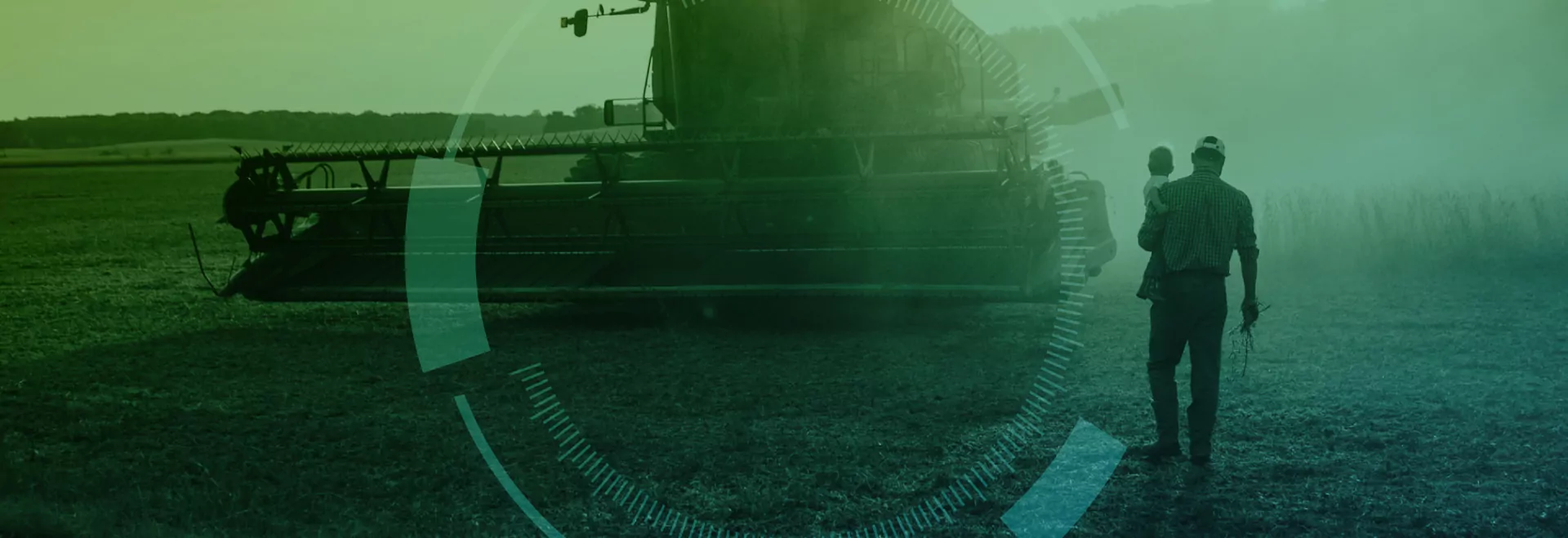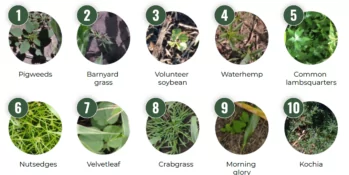

 “We left on a Sunday and headed to Sioux Falls, South Dakota. We scouted from Sioux Falls to Grand Island (Nebraska) to Nebraska City to Spencer and then wound our way to Rochester on Thursday night,” he says. “Generally speaking, the conditions were very dry and disappointing in South Dakota and Nebraska, but the crop generally improved as we headed north. In fact, culminating the tour in Rochester, we saw probably some of the best crops that have ever been grown in southeast Minnesota.”
“We left on a Sunday and headed to Sioux Falls, South Dakota. We scouted from Sioux Falls to Grand Island (Nebraska) to Nebraska City to Spencer and then wound our way to Rochester on Thursday night,” he says. “Generally speaking, the conditions were very dry and disappointing in South Dakota and Nebraska, but the crop generally improved as we headed north. In fact, culminating the tour in Rochester, we saw probably some of the best crops that have ever been grown in southeast Minnesota.”
Schlatter says that a somber tone marked by disappointment resonated throughout the western leg of the tour, with most volunteers expecting to find 150-bushel dryland corn through the states of South Dakota and Nebraska. Unfortunately, the challenging weather conditions both states have seen this summer couldn’t produce those yields for #harvest2022.
“Chip’s (Flory) comment was ‘You’re probably going to have to drop the one off the yield estimates in those areas because there’s just not much there’,” Schlatter said. “There were a lot of beans that we covered that literally had not filled at all – it was critical, if they didn’t get a rain in the next few days, they were pretty much done.”
Over the past two weeks since the Pro Farmer Crop tour, rain has eluded those acres, leaving many areas of Nebraska in an extreme drought designation with rainfall deficits of three to nearly seven inches through the 2022 growing season. Schlatter notes that southern South Dakota’s crop can also be attributed to the record-breaking heat and reemergence of drought conditions in the state.
In any conditions, and especially heading into expected lower-than-average yields, Schlatter says that having the right information is a considerable leg-up for farmers but until Taranis there hasn’t been a way for farmers to truly have all of the information on their crop’s performance.
 “What Taranis offers is the ability to gain valuable insights throughout the entire growing season, which is something that we’ve never had in the industry in the past. We’ve had good planter data but after that the next really solid information source comes from the yield monitor. We’ve got the first and last chapter of the book but the middle chapters are where we’ve got the ability to affect that crop,” he says. “You have to understand what your crop looks like to make those informed decisions, but once you have that – that ability to see every inch of every acre – then you can make decisions that positively affect your crop and you’ve also got a better idea of how to market that crop which is something we’ve never had before. This is really transforming agriculture.”
“What Taranis offers is the ability to gain valuable insights throughout the entire growing season, which is something that we’ve never had in the industry in the past. We’ve had good planter data but after that the next really solid information source comes from the yield monitor. We’ve got the first and last chapter of the book but the middle chapters are where we’ve got the ability to affect that crop,” he says. “You have to understand what your crop looks like to make those informed decisions, but once you have that – that ability to see every inch of every acre – then you can make decisions that positively affect your crop and you’ve also got a better idea of how to market that crop which is something we’ve never had before. This is really transforming agriculture.”
Schlatter says that taking the guesswork out of field scouting to know exactly what percentage of a field is above average and which percentage is below average allows farmers to treat those areas differently and more precisely. Those insights also provide an opportunity for future crop management, helping growers to see what works and what doesn’t in terms of nitrogen, fertility programs, fungicide, and other inputs.
Those opportunities, many times, begin with the stand establishment flight, helping retail agronomists pinpoint weed flushes or other issues that may be present in the field. The flight and sub-millimeter resolution allows species to be identified and spot treatment to be used on those areas of concern. During the growing season, stressors such as pests, weeds, poor performance, nutrient deficiencies, and disease can be identified through the imagery and a course of action built specifically to address those issues.
“The worst thing in the world is to sit in a combine seat and be surprised. If you’re expecting 250 corn and get halfway through the field only seeing 150-bushel corn, that’s devastating. Taranis provides a snapshot from planting through harvest to take away surprises,” Schlatter says about the ability to manage acres to prevent surprises at harvest. “Taranis will make for a much more enjoyable and profitable harvest.”

Digitally scouting millions of acres across the Midwest translates into millions of valuable data points and insights. This data sheds light on the type of crop threats that growers dealt with during the past season and what they might encounter over the next seasons. Here’s a snapshot of what we’ve seen in 2022.

Disease scouting is an important part of the corn growth cycle, as early detection of diseases can have a huge impact on yield. Digital crop scouting and agronomic data analysis allows advisors and farmers to move beyond anecdotal information and get an accurate picture of the diseases threatening their corn crops for more effective decision-making and timely action.